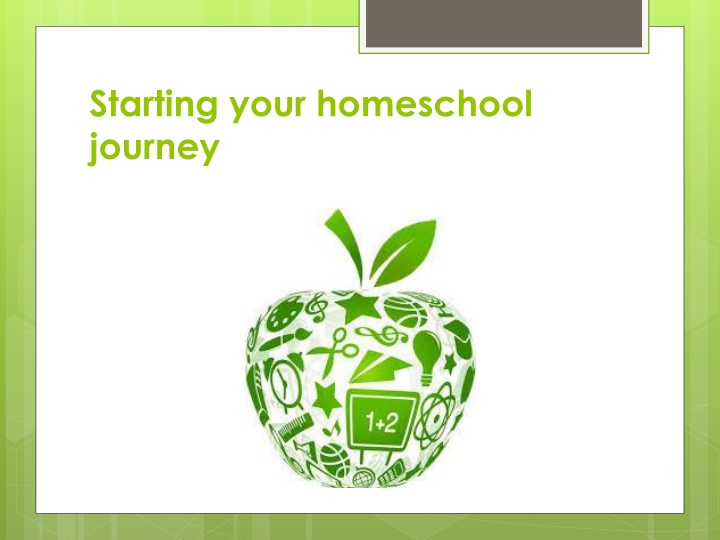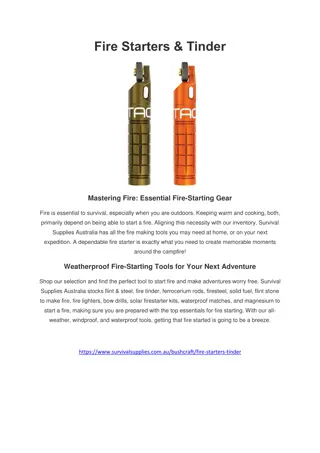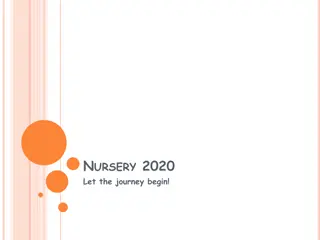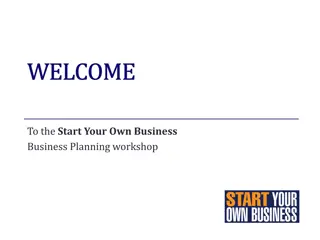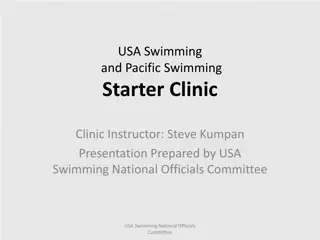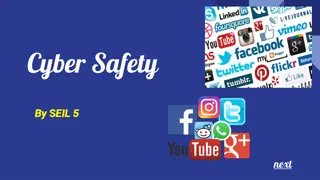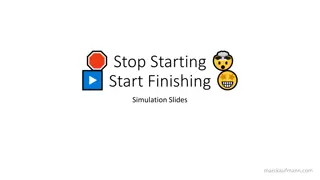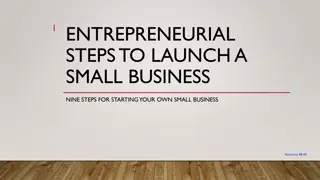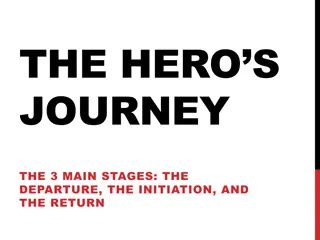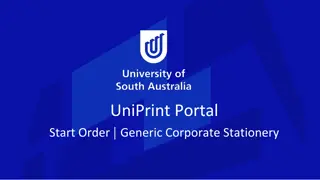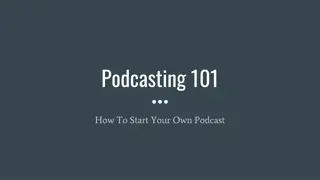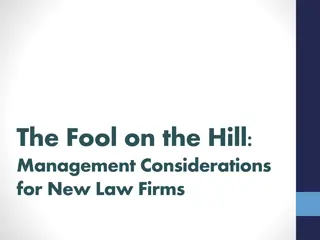Starting your homeschool journey
Embark on your homeschool journey with insightful tips on when to transition, managing changes at home, maintaining connections, and staying informed about regulations. Learn how to avoid pitfalls and comparisons while building a supportive homeschool environment tailored to your family's needs.
Download Presentation

Please find below an Image/Link to download the presentation.
The content on the website is provided AS IS for your information and personal use only. It may not be sold, licensed, or shared on other websites without obtaining consent from the author.If you encounter any issues during the download, it is possible that the publisher has removed the file from their server.
You are allowed to download the files provided on this website for personal or commercial use, subject to the condition that they are used lawfully. All files are the property of their respective owners.
The content on the website is provided AS IS for your information and personal use only. It may not be sold, licensed, or shared on other websites without obtaining consent from the author.
E N D
Presentation Transcript
Starting your homeschool journey
When is it time to pull the student from the school system? Not when you are angry Not when a CAS file is opened Not necessarily when your child asks you to homeschool Not because you have a passing fancy because it s trendy
How will your home will change 3 meals at home 3 loads of dishes each day Higher hydro bill lights on all the time Messier house no longer can you clean in the morning and it stays perfect clean until 3:15pm. Parents will have significantly less downtime then previously
How will your home will change Connections you will need to make time to connect with other families; having other families you can connect with who understand homeschooling is important Fatigue physically, mentally, emotional stress Am I doing enough? What if I mess my kids up? Worry - I bought this curriculum $$$ and now it doesn t work I ve wrecked our budget!!!
Do NOT get vacation envy We see other people s happy pictures online while our kids are having another fight with their sibling over who gets the blue cup. Don t compare YOUR homeschool to anyone else s homeschool We aren t out to duplicate what other people do or what the school system does. Plan your own journey based on the needs of your family.
Look at travel insurance WECHEC Local support group OCHEC / OFTP Provincial support groups HSLDA Canadian support group Stay involved and informed make sure you are getting your homeschooling news from one of these 3 groups and make sure it is relevant to us in Ontario.
Look at travel insurance Be educated so you can defend the right to homeschool Know the laws Open this site page up - http://ontariohomeschool.org/law/ Open this site page up - http://ontariohomeschool.org/policy/ I hope and pray you don t ever get into this situation but if a school board ever questions if your child is being educated satisfactory then read this site: http://ontariohomeschool.org/inquiry/ Letter of Intent you must send one every year to be safe.
Packing your bags If your child has NEVER been enrolled in a school board. If your child has never been enrolled in any school board system then it is your decision if you wish to file a Letter of Intent of not. You are not required to do so under PPM #131 if your child has never been enrolled.
If your child has already be enrolled in a school board. As a parent or guardian, you can choose to withdraw your children from your local school system to homeschool them at any time of the year. There is one requirement. You must send the school board notification in writing that you intend to homeschool.
If your child has already be enrolled in a school board. The Ontario Federation of Teaching Parents has a great page with downloadable versions of the Letter of Intent. The OFTP also suggests, It is both common sense and common courtesy to also provide written notification to the principal of the school the child has been attending, for example by sending a copy of the letter of intent that was sent to the school board. In this way, the child will not be considered truant but will be understood to be excused from attendance under section 21(2)(a) of the Education Act. You should receive a letter back from the school board stating they received your letter. Keep it filed safely.
If your child has already be enrolled in a school board. You will need this letter if you wish to access services such as: correspondence courses offered by the Independent Learning Centre (ILC) run by TVO to gain access to CCAC services (ex: The John McGivney Children's Centre http://www.jmccentre.ca/ ) for the child to be eligible to be included in the benefit unit when the parent is on ODSP or Ontario Works assistance If they don t send a letter back and you need one to access these services you can request one. Just ask they are usually great to respond.
Timeline for dropping the Letter of Intent to homeschool. Board office you can date the letter for any date Clear child s locker, account for all your child s textbooks, library books, instruments, equipment/laptops, uniforms be ready to hand them back in on your child s last day of school For curtesy sake give a copy of the letter to the principal and say good-bye. Saying good-bye some teachers will take this very personally and I had one teacher who surprised me by telling my daughter I was going to mess up her life. I shut down the conversation, propelled my daughter around her and walked away. Don t engage. It s not worth it.
Start to decide your final destination Consider having your student take an assessment tests as soon as they are home: Protection for you you can clearly see where the child was when you brought them home. If your homeschool is called into question you can bring that documentation out to show where the child was when you started homeschooling them. Compared to where the child was when the questions are raised. Remember: 21 - (2) A person is excused from attendance at school if, (a) the person is receiving satisfactory instruction at home or elsewhere; The government doesn t define what receiving satisfactory instruction means, simply prove the child is moving forward as a reasonable rate and you should be fine.
Assessments help you determine which curriculum to use Also help to determine which grade level your child is in a specific subject Don t get attached to a specific grade level I have never met a child who is completely competent at their correct grade level across all subjects. Know that if you are bringing your child home, you can expect up to a two grade level difference in your child s textbooks. Don t worry, they will catch up quickly.
MYTH- homeschool students are smarter than their counterparts. This is not necessarily true. What is true is the parents are able to teach to that specific child s talents and skills. Because we aren t teaching a class of 30+ kids we can teach faster or slower as needed. The whole class doesn t have to wait for the class clown to calm down for the teacher to proceed. So, less time is wasted in our homeschools vs the brick and mortar set-up.
Get a road map Set realistic, measurable SMART goals Plan that there will be pit stops along the way When a student is interested in something go down that rabbit trail and take the time to learn about it. Assume there will be construction sites & detours along the way Every child struggles with something, for some it s handwriting, for others dyslexia or learning to read. Take the time to slow down when you find a problem and get the issue dealt with, things will speed up later.
Get a road map When a child struggles with a concept Does it need to be taught differently Is the child missing some base knowledge to understand the subject Don t assume they should know something instead work with the assumption that they don t know anything about the topic and help them build their pyramid of knowledge from the ground up.
Plan for off the main road excursions Field trips Co-ops Classes art, music, pottery, cooking, swimming, etc YMCA WEhomeschool.ca website
Select your vehicle Cathy Duffy s book - http://wehomeschool.ca/buying- curriculum/ Cathy Duffy s book will help you match up your teaching style with your child s learning style. This will save you money and quite possibly many tears.
The Parents teaching style The following teaching styles information was quoted from http://www.homeschool.com/new/difstyles.asp
School-At-Home School-at-Home is the style most often portrayed in the media because it is so easy to understand and can be accompanied by a photo of children studying around the kitchen table. This is also the most expensive method and the style with the highest burnout rate. Most families who follow the school-at-home approach purchase boxed curriculum that comes with textbooks, study schedules, grades and record keeping. Some families use the school-at-home approach, but make up their own lesson plans and find their own learning materials. The advantage of this style is that families know exactly what to teach and when to teach it. That can be a comfort when you are just starting out. The disadvantage is that this method requires much more work on the part of the teacher/parent and the lessons are not as much fun for the children.
Unschooling Unschooling is also known as natural, interest-led, and child-led learning. Unschoolers learn from everyday life experiences and do not use school schedules or formal lessons. Instead, unschooled children follow their interests and learn in much the same way as adults do-by pursuing an interest or curiosity. In the same way that children learn to walk and talk, unschooled children learn their math, science, reading and history.
Charlotte Mason The Charlotte Mason method has at its core the belief that children are not mere containers waiting to be filled with knowledge, but persons in their own right deserving of respect. According to Charlotte Mason, children should be given time to play, create, and be involved in real-life situations from which they can learn. Students of the Charlotte Mason method take nature walks, visit art museums, and learn geography, history and literature from "living books." (Books that make these subjects come alive).
Relaxed/Eclectic Homeschooling "Relaxed" or "Eclectic" homeschooling is the method used most often by homeschoolers. Basically, eclectic homeschoolers use a little of this and a little of that, using workbooks for math, reading, and spelling, and taking an unschooling approach for the other subjects. For the family who practices "relaxed" or eclectic homeschooling, mornings are often used for more formal, "have to" work, and afternoons are used for hobbies and other special projects. There are no specific times set up for each subject, but instead the child is expected to meet certain educational goals.
Classical The "Classical" approach has existed since the Middle Ages and has produced some of the greatest minds in history. The goal of the classical approach is to teach people how to learn for themselves. The five tools of learning, known as the Trivium, are Reason, Record, Research, Relate and Rhetoric. Younger children begin with the preparing stage, where they learn the three R's. The grammar stage is next, which emphasizes compositions and collections, and then the dialectic stage, where serious reading, study and research take place. All the tools come together in the Rhetoric stage where communication is the primary focus. For help, homeschoolers following the classical style will read books about this method, find Web sites about classical homeschooling, and possibly join a classical homeschooling support group.
Waldorf The Waldorf method is also used in some homeschools. Waldorf education is based on the work of Rudolf Steiner and stresses the importance of educating the whole child- body, mind and spirit. In the early grades there is an emphasis on arts and crafts, music and movement, and nature. Older children are taught to develop self- awareness and how to reason things out for themselves. Children in a Waldorf homeschool do not use standard textbooks; instead the children create their own books.
Montessori Montessori materials are also popular in some homeschools. The Montessori Method emphasizes "errorless learning" where the children learn at their own pace and in that way develop their full potential. The Montessori homeschool emphasizes beauty and quality and avoids things that are confusing or cluttered.
Multiple Intelligences is an idea developed by Howard Gardner and Harvard University's "Project Zero." The belief is that everyone is intelligent in his or her own way and that learning is easiest and most effective when it uses a person's strengths instead of their weaknesses.
The learning style of the student: Quoted from https://www.learning-styles-online.com/overview/
The Seven Learning Styles Visual (spatial): You prefer using pictures, images, and spatial understanding. Aural (auditory-musical): You prefer using sound and music. Verbal (linguistic): You prefer using words, both in speech and writing. Physical (kinesthetic): You prefer using your body, hands and sense of touch. Logical (mathematical): You prefer using logic, reasoning and systems. Social (interpersonal): You prefer to learn in groups or with other
Check your tires Are you required to keep any documentation like a portfolio in Ontario? No - but it is wise to do so, and at the high school level it is imperative to do so. I suggest that if you think you might homeschool through high school that you start learning about items to keep in grade 6.
Keeping a bankers box of completed work to show what your child has been doing, if the school board ever raised any concerns is a great way to protect yourself. Put in completed tests that you have graded even if you don t choose to show your kids their grade. Keep examples of your child s work for every subject.
Put in pictures of field trips, completed projects, posters. Toss in any homeschool related receipt you can t claim them for income tax purposes but you can show that you did purchase curriculum for your child to use. Keep a log of what books your child has read or keep all the slips of paper from the library in a notebook. That way you can quickly look up which books your family has brought home.
Write out what curriculum you plan on using for the school year write down Titles and ISBN # s What s an ISBN #? - An ISBN is an International Standard Book Number. ISBNs were 10 or 13 digits. ISBNs are calculated using a specific mathematical formula and include a check digit to validate the number.
ISBN numbers are a great tool for you to look up prices of used books online. Again keeping a portfolio could be very important at the high school level, but it is NOT required to go from grade 8 to grade 9 to enter your local high school. There is no exit exam to leave grade 8 in Ontario, so there will be no entrance exam for your homeschooled grade 8 student to enter the local high school for grade 9.
Start a packing list Choosing curriculum we aren t buying anything yet! I strongly recommend Cathy Duffy s book Look through catalogs, magazines, curriculum guides and books Talk to other homeschoolers about what worked for them and why as well as what didn t work and why. Attend provincial convention workshops/exhibit halls and local curriculum fairs
Go to used book sales and used curriculum shops Evaluate your child s learning styles Decide which methods seem to fit your family best at this time there might be parts of multiple methods that work best for your family and these methods will change as your child grows
Purchase your supplies Classroom consumable supplies Paper, pencils, pencil sharpener,rulers, pens, notebooks of some sort Book shelves, filing cabinet, storage cabinets Items specified in your curriculum (math manipulatives, dissection kits)
Curriculum Use your list and stay on task. Don t fall into the new car smell mode of buying all the shiny new curriculum!! Your budget can t afford it all. Where do you buy curriculum? http://wehomeschool.ca/where-can-i-find/ My favourite place is https://www.christianbook.com/page/homes chool?navcat=Homeschool And Amazon.COM and Amazon.CA
Wait, what about shipping costs? You can pay to have it shipped directly to you from the USA $$$ You can have it shipped to http://detroitmailbox.com/ I have had some success asking companies to waive the shipping fee when I explain I live in Canada and I m having it shipped to an American address. Also many companies have sales or minimum amounts you need to spend to get free shipping to an American address, take advantage of that.
Establish a routine Google homeschool schedule and you will find countless blogs and sites that will exclaim that their plan is the best one out there. Here s the main point, the best plan is one you can easily maintain and follow through with. Keep it simple. 10 days of easy lunches Create a rolling 2 week schedule of cheap easy lunches and snacks that you can purchase when the items are on sale and store up in a pantry. Start small don t blow your food budget out of the water! Make friends with your crockpot or instant pot. Home Ec can be counted as learning! Let the kids help create one new dessert while you study a certain country.
Make sure you find time for fun. Go to the park Go swim Play at the beach Walk through the woods These are good for your kids and for you! Connect with other homeschoolers on a regular basis so you and your children can make homeschool friendships.
Ways to contact us: Through the website Wehomeschool.ca Our email address: wehomeschool.ca@gmail.com Our next meeting is on: April 24, 2017 at this location 5:30 - 7:30pm
